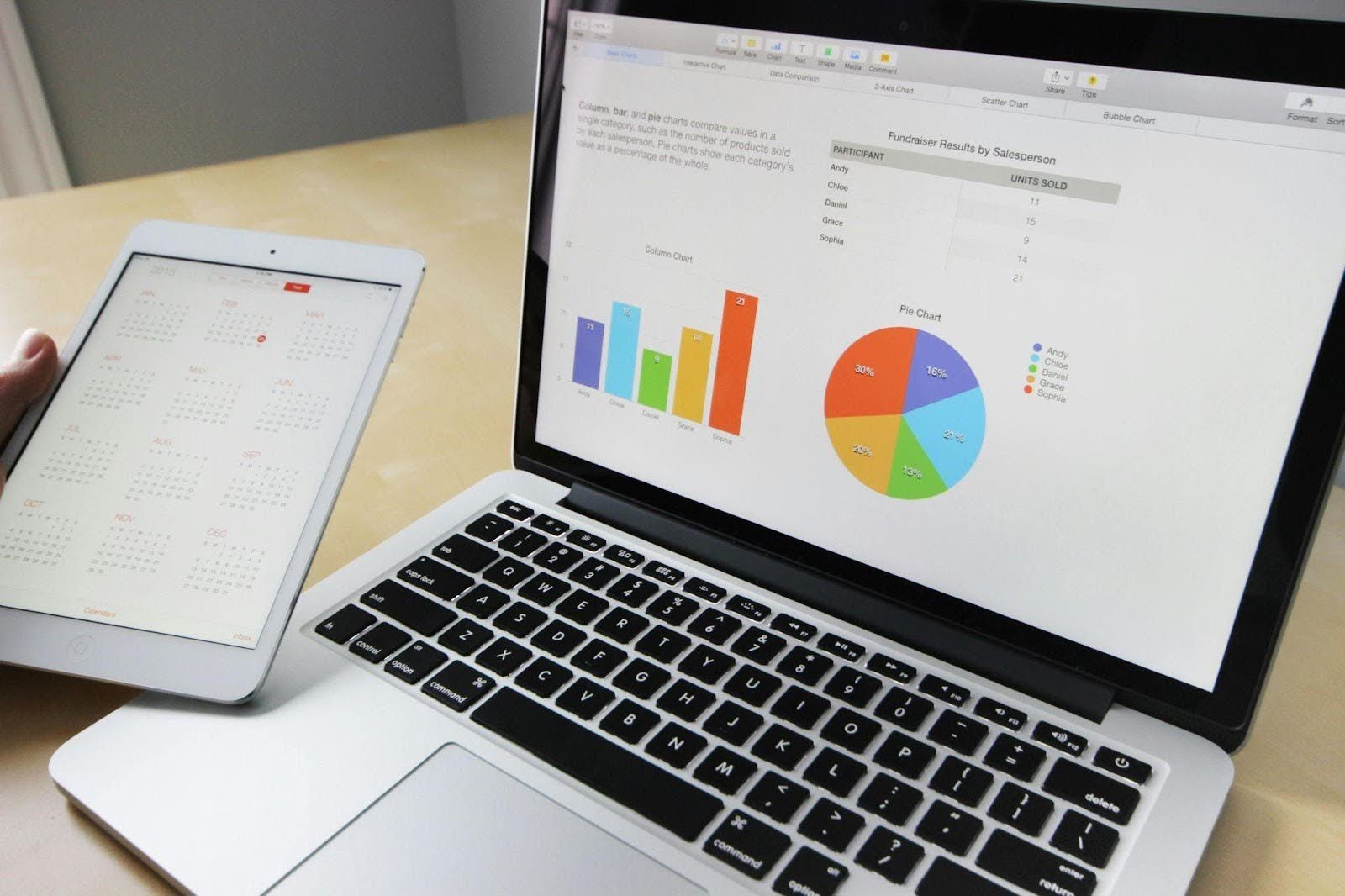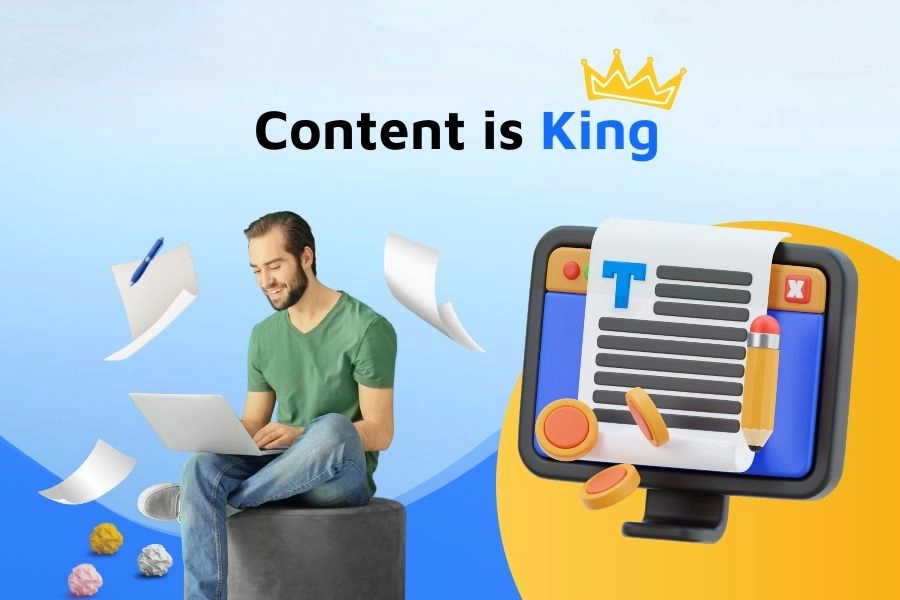Table of Contents
ToggleMaximizing ROI: A Comprehensive Guide to Google Ads Campaigns Secrets
Let’s break down ROI—Return on Investment. For Google ads, this indicates the amount of profit your Google ads campaign generates compared to your spending. Let’s say, the total sales from a Google ads campaign is $1000, the cost of that PPC campaign is $150, and the total product costs are $100. Therefore, the ROI can be calculated by dividing the revenue by the total cost. The total cost is (product cost + ad cost ).
Total Cost = $100 + $150
Revenue = ($1000 – ($100 + $150))
ROI = ($1000 – ($100 + $150)) / ($100 + $150) = 300%
But why making such a hassle to calculate your campaign’s ROI? By calculating ROI, you can determine the success of your Google Ads campaign. Even if you made thousands of dollars from a single campaign by spending doubles – there’s no gain but a loss. Your gain should always be greater than your spending, which means a higher ROI.
Knowing the ROI lets you manage your budget adequately. You can also find out which of your campaigns is doing better by comparing their ROI. Once you find your high-performing campaigns, you can rest easy and allocate more budget to it! Moreover, ROI allows you to locate your not-so-well-performing campaigns and make improvements.
Let’s dig deeper into this post to find out how to maximize your Google Ads PPC campaign’s success. But before that, let’s learn some more about Google Ads Campaigns—let’s get going
“Your audience is out there. Make sure they find you with the perfect Google Ads strategy, every time!”
Google Ads Campaigns Explained

Source: https://www.pexels.com/photo/gray-and-black-laptop-computer-265087/
Whenever we browse SERPs ( search engine results pages ) like Google, we see ads for various establishments or products. Like others, you can display your businesses’ ads on Google search and its vast pool of partner websites using Google Ads account, a PPC (pay-per-click) platform.
Many different types of Google ad campaigns exist. Find out which of them suits your objectives the best–
Performance Max Campaigns
If you want to quickly set up a campaign yet still wish to show your ad on various Google platforms, Performance Max is the one you should go for. While AI optimizes your campaign when it’s live, you can still suggest changes to better optimize your Performance Max campaigns. In this sort of campaign, Google AI sets your budget, bids, and creative assets across various platforms.
This saves you time creating and setting up campaigns for each platform. Based on your selected goals, Google AI automatically optimizes ad performance and helps you gain new audience segments. You can also get access to richer insights where you can view the top-performing assets and ad creatives and uncover the best ways to improve your ads.
Search Campaigns
Search campaigns target a highly specific audience on Google search results. In this campaign, you use text ads and optimize them with relevant keywords. It’s best for increasing online sales and signups, as you can reach people who are searching for your services/products.
Display Campaigns
Display campaigns are for you when you show your ads in more than one place. Display ads can be shown on websites, YouTube, apps, and other Google-owned properties. Such campaigns are better for driving sales and signups as you can set up visually engaging ads with call-to-actions.
Video Campaigns
Show video ads on YouTube and websites using this sort of campaign. You can use video ads to boost awareness or conversion – multiple campaign types can be found. Six types of video campaigns are present: Drive conversions, Video reach campaigns, Outstream, Get views, Custom video campaigns, and Ad sequence. However, Google has declared that the “Custom video campaign” will soon be unavailable.
App Campaigns
This is best for those who wish to get new mobile app installs and boost app sales. Using your app information, the campaign itself optimizes the ads and shows your ads to various platforms, including other apps. This is the easiest form of app promotion, as Google AI manages the targeting, bidding, and ad creation. App campaigns have 3 subtypes: app installs, App engagement, and App pre-registration.
Smart Campaigns
Typically, new Google ads users encounter the Smart Mode version of the ads once they open a new account. Here, you need to set up a few ads and enter some business details. After that, Google AI will power your targeting and optimize your ads for maximum performance.
Shopping Campaigns
These are also known as Performance Max with Merchant Center feeds that are perfect for retailers. This campaign displays product listings on search results and the Google shopping tab. Physical store owners can also promote their products with local inventory ads. These are ideal campaigns for both online store owners and physical shop owners looking to reach new customers and promote products. To run this campaign, you need a Merchant Center account.
Below, we’ve assembled the best ways to maximize your Google ads ROI.
Setting Goals and KPIs
When you set goals and KPIs for your Google ad campaigns, you know where you’re going and what you should expect in return. Your goals and KPIs will tell you what a successful campaign should look like.
Your goals can be to increase web traffic, brand visibility, sales, or signups (and others). After selecting your objectives, get prepared to measure and track your campaigns. To gauge your results, you’ll discover various key performance indicators (KPIs) through the Google ads platform, such as click-through rates (CTRs), cost per acquisition (CPA), conversion rates, and return on ad spend (ROAS).
These KPIs help you do more than measuring your success. You can use them to make data-driven decisions and optimize your campaigns. Also, prioritize setting up conversion tracking on your website. This allows you to track various actions your website users take, like signing up for a form, buying products, or clicking on the ads. These are valuable insights to improve your ads and set up your sales funnel.
Performing Keyword Research
Keyword research is done to locate the popular keywords. These are key terms people use to find their desired products/services/information on search engines. Keyword research allows you to find out and target the correct terms using which people look for what you offer.
When you do in-depth keyword analysis, you get to target the right customers, and the proper conversions increase. Brainstorming is a creative way to understand your consumers’ intent and list down the words they might use in their searches.
Once you list down the initial words, use keyword research tools like SEMrush or Google Keyword Planner to analyze your keywords.
For example, if you’re selling wristwatches, your potential customers might use “best watches, “”Men’s Watch near me,” or “Watch under $50 “.
Entering words like watch, best watch, and men’s watch in your keyword tool will give you insights about their search volume ( like how many people are actually using this ) and suggest other relevant keywords.
It’s always recommended that you choose keywords that are less competitive but have a higher volume of traffic. The competitiveness or keyword difficulty can be found on keyword tools.
Optimizing Ad Copy
To create a winning ad campaign, you need an engaging ad copy. However, it’s essential to create multiple versions of your ad copy and test their performance. You can continuously tweak and optimize your copy to get the best results.
Paid ads expert Claire Jarrett said “ Google Ads will be worth testing – but only if you have the budget to start aggregating data and A/B testing through your campaigns. “
Perform A/B tests, where you try multiple versions of your ads with different sets of ad copy. You might just change the headlines, description, or call to action to see which version is more successful.
People often make the mistake of changing all the elements of their ad copy while A/B testing. For example, if you’re testing the headlines, keep the rest of the copy unchanged. Otherwise, you cannot tell which element is causing the effect.
You can determine the success of your A/B tests by observing the changes in KPIs such as conversion rates or click-through rates.
To deliver the best results, you should also refine your copy based on your acquired data. This way, you can create different versions of your ads and find out which kind of ad copy works best for you.
Designing Landing Pages
A landing page boosts your chances of conversion by increasing engagement and desired actions. A landing page can help you convey details about your offer and engage your visitors. If your visitors don’t find what they expect in your landing page after clicking your ad, they are more likely to leave.
This is why optimizing your landing page lets you engage your audience by adding relevant information. Adding a clear call to action throughout your landing page should also make a great impact.
Since most visitors nowadays enter websites from mobile devices, consider making your landing page mobile-friendly. Your website should also be speedy so your users don’t bounce. Make sure your users can contact you from the site easily and that it has easy navigation.
Another pro tip is, putting all the important information at the top of your page so the users can see them quickly. Not all users want to scroll down to the bottom of the page to find out what they’re looking for.
Setting Up Bid Strategy & Budget
Bidding indicates the maximum amount you need to pay for an ad click. Your ad’s Quality Score and Bid amount determine its possibility of being shown and clicked. You can set a higher bid amount to increase the likelihood of your ad display. However, a balance between bid amount and performance is needed to keep the ROI high. Otherwise, a high bid amount might increase your ad budget and reduce your ROI.
First, determine your marketing budget and analyze the competition in the industry. Then, consider the value of conversion to determine an optimal bid amount that can bring you higher clicks.
If you wish to bypass the hassle, try the automated bidding strategies Google ads offer. These include AI-powered algorithms like target CPA (cost per acquisition) or target ROAS (return on ad spend). Based on real-time data and insights, these techniques will adjust your bids.
However, you should still review and adjust your bids based on the required data to make them more effective. Find out which keywords and ad groups are not working correctly and make changes to see improvements. You can also increase your bids for high-performing keywords or ad groups to maximize performance.
Leveraging Ad Assets
Ad assets or extensions allow you to add additional information, such as an address, phone number, store rating, or other webpage links, to your ads in the form of snippets. Ad extensions are a great way to improve visibility and click-through rates. Google Ads account allows you to use various types of ad extensions. Among them, site link extensions are the most popular. This extension lets you add a specific section to your website. You can easily show product pages or contact forms with your ads to make them more engaging to your audience.
Call extensions are also excellent because they let you add a phone number so users can call you directly and get more information about your services. For physical businesses, location extensions are a great way to add a business address and a map marker in the ads. Review extensions are also popular because they show positive reviews or ratings from reputable sources and help convert more customers.
Developing Retargeting Strategies
Retargeting or remarketing lets you boost ROI by targeting visitors who have interacted with your ads or websites. Create highly relevant ads and target such users to drive repeat visits and boost brand awareness and conversions.
You can create a custom audience group based on user behavior. This way, you can target those who added items to the cart but didn’t complete their purchase. By retargeting them, you might intrigue their interest and help them complete their purchase.
You can also create personalized ads for your website visitors based on their interests. Suppose they visit a particular page or product. In that case, you might retarget them with ads for those particular products/services. Retargeting also allows you to reach a new audience by finding users who share similar interests with your website users.
Improving Ad Quality
To boost ROI, prioritize the Quality Score. This score analyses how relevant your ads and landing pages are to users’ search queries. By increasing the Quality Score, you can lower cost-per-click and improve ad placements.
For branded keywords, you should target to reach a quality score between 8 and 10. And for commercial keywords, it should be between 7 and 9
Avoiding Click Fraud
Often, a considerable number of ad clicks come from fake sources like web crawlers and bots. If you get a lot of traffic yet it looks suspicious or low-converting, you might be experiencing click fraud. You might use anti-click fraud software to prevent bots from placing clicks. However, we suggest getting your ads checked by experts offering Google ad services before you take any action.
Conclusion
Skyrocketing your Google ads ROI depends on your consistent optimization, data-driven decisions, and user-centric targets. Let’s sum up this-
- Find out the right keywords and audience
- Offer them relevant information
- Create engaging ad copy and landing pages
- Have strong call-to-actions
- Create multiple versions and do an A/B test
- Regularly update and revise your ads












